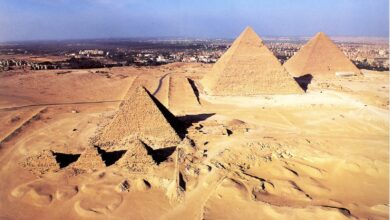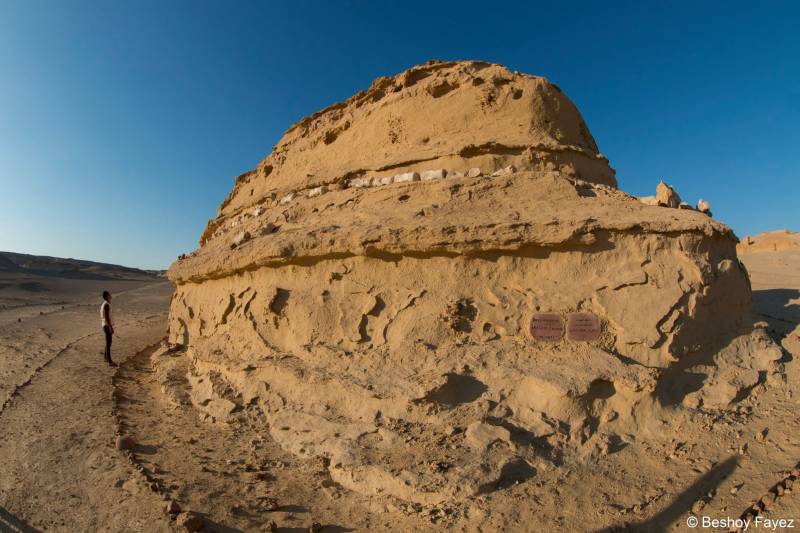Solar energy advocates have found a surprising critic in environmentalists, who say that assessments must be made to protect desert plants and wildlife. Egypt's arid climate, with few clouds and little rain, have made it ideal for adopting solar power as a renewable energy source.
Already, construction of Kuryamatt, a 150-megawatt hybrid power plant that will use both solar energy and natural gas to generate electricity, is underway 90 kilometers south of Cairo. Plans for a second large solar plant, in Upper Egypt's Kom Ombo, are also underway.
Both projects have gained financing from the World Bank and other international bodies. But, while some environmentalists laud shifting away from reliance on fossil fuels, others remain wary of the overlooked impact of building in the desert.
“There's a misconception that the desert is a wasteland. It's got an ecosystem of lifeforms, unique geological landscape with fossils, as well as cultural heritage sites. There are also alternative uses such as tourism,” says Mindy Baha El Din, an environmental consultant and bird expert. According to Baha El Din, while it’s likely that solar plants will have some impact on the desert ecosystem, it's difficult to assess the degree.
“We know from experience that any added complexity to the environment will attract birds to the land. The desert doesn't have a lot of shelter, so birds will roost in any rock structure they find,” explains Baha El Din.
Location is everything, according to Tariq Zulficar, another environmental consultant. “Whether or not it will affect threatened wildlife depends on the location of the farm,” he says, adding, “Some species are restricted to very small geographical areas, while some are more common and widespread.”
The construction process, with an increase of vehicle traffic and noise, will disrupt natural habitats, he says. In the US, solar plants are facing lawsuits from concerned environmentalists who claim that in the rush to adopt renewable energy, the dozens of solar plants springing up in the western deserts are a threat to rare plants and animals.
A US$1 billion solar energy project in California, Genesis, may be halted by an outbreak of distemper among kit foxes and the discovery of a prehistoric human settlement on the work site.
A second project, worth USS2.2 billion, met a major roadblock when the US Federal Bureau of Land Management found its site in the Mojave desert was home to desert tortoises, which are classified as vulnerable by the International Union for Conservation of Nature. The company, BrightSource Energy, cannot restart construction until it has safely relocated the turtles.
In Egypt, bird life is a likely sticking point.
Egypt has a strategic position geographically along the migration routes of species that winter in Africa. Baha El Din estimates that around six million birds migrate annually through Egypt. “So solar panels will attract birds, but we don't know if that will create more nature, or if there would be no vegetation [due to overuse],” she adds.
According to Baha El Din, side by side expansion of solar plants could have a larger impact on the desert's ecosystem.
Water is another key component. Water is the cooling agent for what traditionally has been the most cost-efficient type of large-scale solar plants. But Egypt already faces increasingly limited access to water.
With a growing population, and bids by Nile states to loosen Egypt's majority grip on the Nile waters, some experts warn that allocating water to keep the plants cool and solar panels clean may not be a priority in the future. “The farm could also add stress on scarce water resources, if water is needed to clean the panels,” says Zulficar.
According to Baha El Din, Egypt's officials must create a strategic plan for the region. “There's all these conflicting competitions for land use; to grow more food, tourism, oil and gas energy, mines and quarrying,” she says, adding, “We need to look at existing land use, and mark off protected areas, oil and gas, urban expansion, industrial expansion. We need to bring all the stakeholders together to discuss.”
Yehia al-Mahgary, a professor at Egypt-Japan University of Science and Technology who is working on solar technology that doesn't rely on water cooling systems, says that despite drawbacks, solar power plants are far more environmentally friendly that existing non-renewable power sources. “I'm not against nuclear power, but it’s a sophisticated technology and if there's human error or an accident, like Chernobyl, then it’s dangerous for everything around it.”
Instead, he advocates that Egypt invests in solar energy now, and generate enough electricity to lower Egypt's dependence on fossil fuels, while exporting abroad at a profit. For others, small setups and urban systems deserve more attention.
Ahmed Hamza, also a professor at the Egypt-Japan University of Science and Technology, recommends installing small solar power systems on rooftops, and then feeding the collected energy into a common grid that supplies it to the neighborhood. “With this, you wouldn't need to find land on which to install the system and can instead install them on roofs,” Hamza says.
Over 40 countries have adopted some form of this arrangement, using a feed-in tariff — or premium rate paid for electricity fed back into the grid from a designated renewable electricity generator — to attract people to the scheme.
Solar energy systems on an individual or community scale offer a huge benefit to farmers with little income and limited access to resources, Hamza adds.
Earlier this year, a pilot project by Egypt's National Research Centre was set to use solar power to generate electricity for special home appliances to be used in in rural areas, and solar powered pumps are becoming more common on desert farms.
“When looking at reclaimed desert lands, there is a lot of land, and investment opportunities are possible. Most rely on underground water and need a pump to draw the water up, and many places are working with solar power for this,” says Hamza.
As the cost of solar power cells continues to drop, Hamza says, it will become a more viable option for Egypt's electricity needs, particularly in the home.




